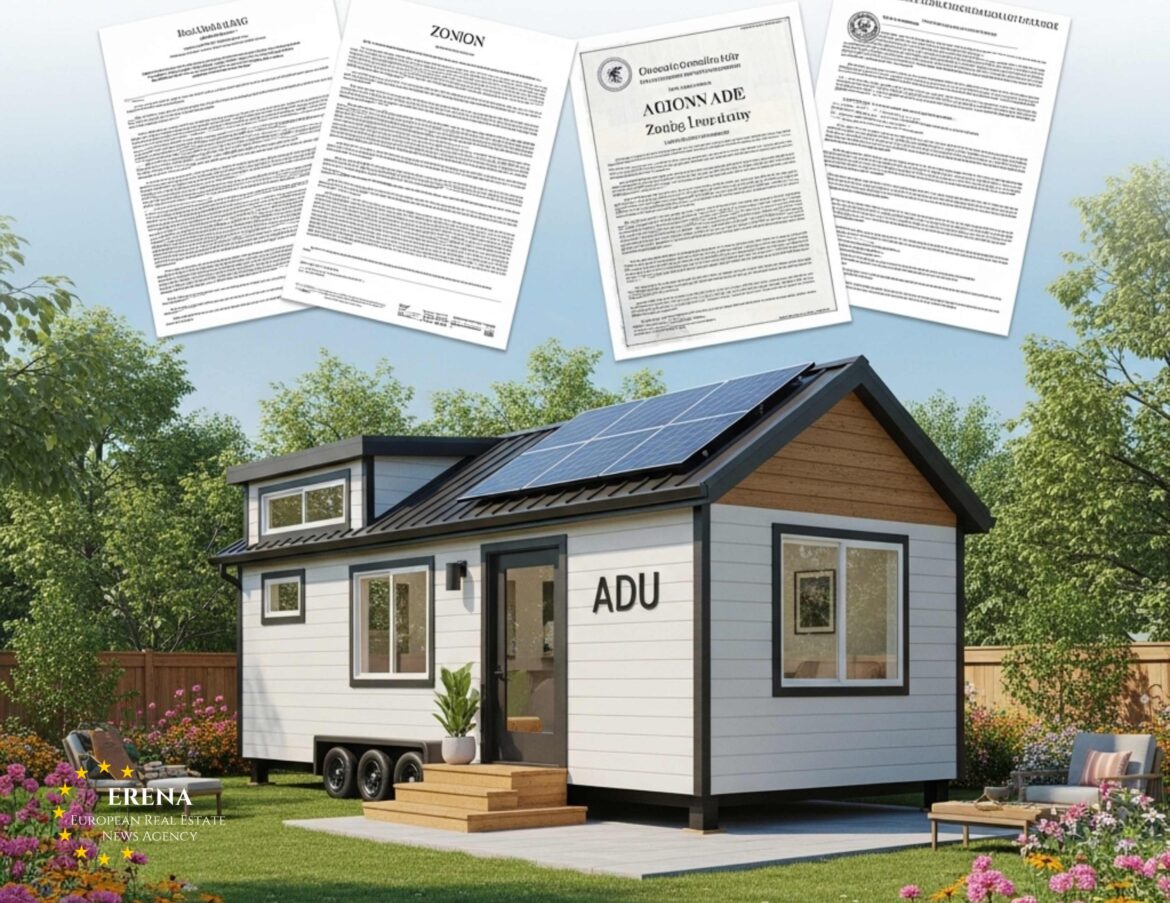As housing affordability challenges mount and zoning reforms sweep across major cities, investors and homeowners alike are turning to Accessory Dwelling Units (ADUs) and tiny homes as powerful tools to generate income and boost property value. Across European cities from Barcelona to Berlin, these compact housing solutions are proving both financially and legally viable—if you know how to navigate the costs, rental strategies, and legal frameworks.
The Cost of Building: From Garages to Backyard Units
ADUs vary widely in size, style, and construction type. Costs also vary, but most fall within a range accessible to middle-class property owners.
-
Garage Conversion: From modest renovations to fully equipped living units, garage conversions are one of the most affordable ADU options. Typical costs range from €47,000 to €140,000 for 30–60 m².
-
Attached ADU: Built as extensions of existing homes, these offer convenient living solutions for extended families or renters. Costs range from €94,000 to €235,000 for 40–80 m².
-
Detached ADU: Freestanding backyard units tend to be more expensive but can significantly increase property value. In high-demand cities, homeowners often recoup their investment through both rental income and enhanced resale value. These units typically cost €140,000 to €330,000+ for 50–110 m².
Tiny homes, on the other hand, can be even more cost-effective:
-
Prefab tiny home kits: These kits offer a quick and affordable entry point for small-space living, with prices starting from around €9,000 and going up to €46,000.
-
Custom portable units: Tailored to specific needs, these mobile options are ideal for off-grid or flexible placements. Most range between €28,000 and €75,000.
-
Off-grid options: With features like solar panels and composting toilets, these homes appeal to sustainability-minded renters. Fully equipped models average around €55,000.
Rental Income Potential: Passive Income Made Practical
Once built, ADUs and tiny homes can provide steady rental income through long-term leases or short-term platforms like Airbnb, VRBO, Spotahome, and Wunderflats.
-
Garage or in-law unit: Typically generate modest but steady monthly income, often ranging from €1,000 to €2,700 per month.
-
Detached backyard ADU: Often command higher rental rates, especially in urban or coastal locations, with returns of €1,500 to €3,200 per month.
-
Tiny home rental: Popular in tourist regions, these units offer an attractive return for those seeking short-term income. Average monthly income ranges between €1,100 and €1,600.
Many owners report recovering their investment within a decade, even after factoring in taxes, insurance, and maintenance.
Grants and Legal Support: Where Governments Step In
Governments are increasingly encouraging small-footprint housing by offering financial and legal support. Notable programs include:
-
Spain: The city of Barcelona has introduced fast-track permitting for ADUs and subsidies for low-income homeowners building secondary units.
-
France: In regions like Occitanie, small-scale eco-housing projects including tiny homes receive tax relief and planning incentives.
-
Germany: Berlin and Hamburg support modular backyard units through housing innovation grants.
-
Italy: Milan’s local government offers zoning flexibility and architectural competitions for compact urban housing prototypes.
In several countries, there is growing legal momentum for separate ADU ownership or resale. For example, France and Germany are exploring co-ownership models and zoning modifications that could enable secondary units to be transferred or sold independently in certain urban districts.
Tiny Homes: Minimalism Meets Mobility
Tiny homes present a different legal and logistical profile. While cost-efficient and quick to install, zoning laws remain a major obstacle. Many European municipalities allow tiny homes under strict planning rules—typically in designated eco-housing zones, on private land as secondary structures, or as seasonal tourist accommodations.
-
Netherlands: Cities like Almere and Amsterdam have dedicated pilot neighborhoods for tiny house living.
-
Germany: Hamburg supports mobile mini-homes on leased land with shared utilities.
-
France: Tiny houses are increasingly accepted in rural zones or on designated camping-classified land.
Tiny homes are particularly profitable in tourist regions, where off-grid or nature-based living can attract premium short-term rental rates.
Smart Strategies for Profit
Understand Your Local Laws
Every city defines and regulates ADUs differently. Tiny homes may be classified as mobile homes, which affects permits and taxes.
Take Advantage of Financial Incentives
Use state and local subsidies to reduce upfront costs and increase ROI.
Focus on Mid-Term Rentals
Healthcare professionals, digital nomads, and students generate stable demand for 30–90-day leases.
Plan for Future Resale
In favorable markets, an ADU can be sold separately—either as a condo or duplex unit.
Build Efficient, Desirable Spaces
Smart layouts and energy-saving appliances appeal to eco-conscious renters and reduce operating costs.
A Profitable Path for the Future
Whether you’re a first-time homeowner or seasoned investor, ADUs and tiny homes offer one of the most accessible and scalable paths to income in real estate today. With relatively low upfront investments and growing public support for zoning reform, this trend isn’t just legal—it’s profitable and gaining momentum across the country.
For those who navigate the regulations wisely and act early, the potential returns could reshape what property investment means in a world of shrinking footprints and growing housing demand.

